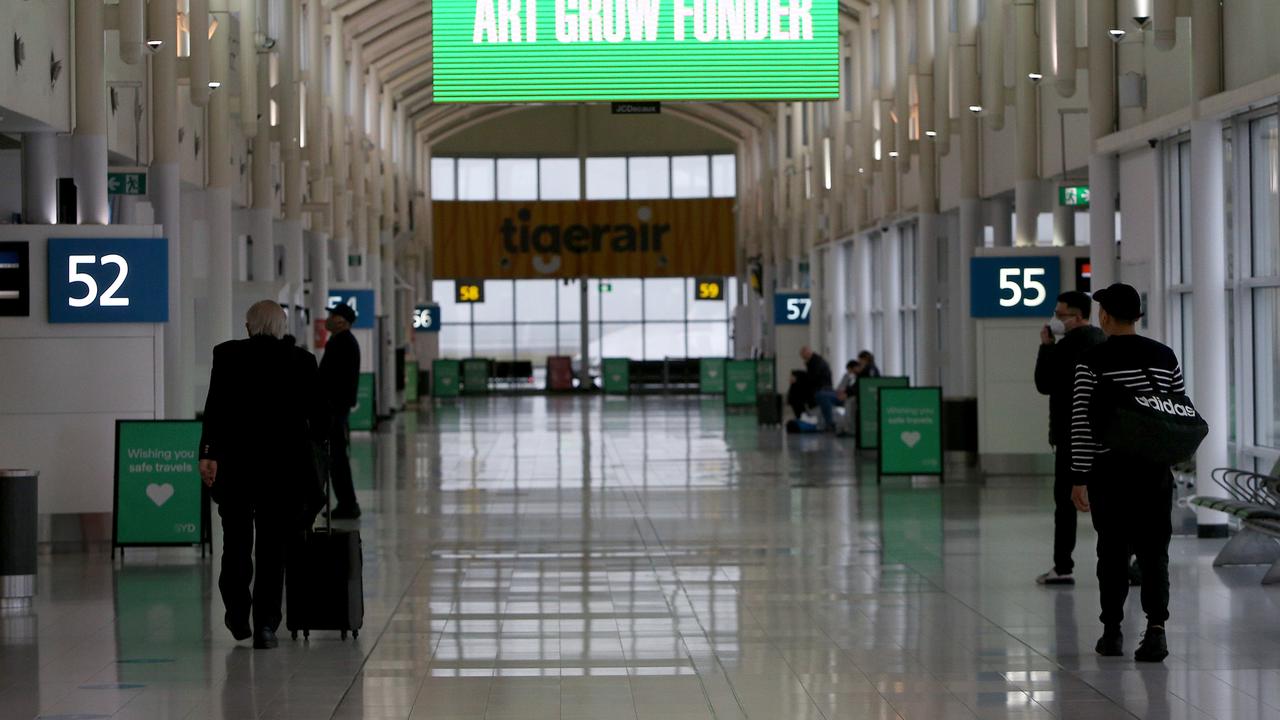People must understand National Broadband Network rollout reality
THE National Broadband Network is getting a bum rap — bizarrely, because it’s actually been too successful, writes Terry McCrann.

Terry McCrann
Don't miss out on the headlines from Terry McCrann. Followed categories will be added to My News.
THE National Broadband Network is getting a bum rap — bizarrely, because it’s actually been too successful.
No, and clearly surprisingly (and worryingly so) to far too many people, NBN chief Bill Morrow hasn’t been able to wave a magic wand and deliver an instantly installed all-fibre network, with all the inevitable start-up bugs eliminated upfront, pervasively to every corner of the continent. And done so, if not yesterday, at least NOW.
What he has been able to do is get the NBN rolled out to just over half the premises across this continent; and get it rolled out to them — almost from a standing start — in less than four years.
If we’d stuck with the Kevin Rudd-Stephen Conroy all-fibre Rolls-Royce version, by now we would have a great state-of-the-art network reaching all of perhaps 15-20 per cent of premises. And at the cost of much the same billions that has got it to 50 per cent of the country.
Under the Rudd-Conroy model, those — small minority of — premises would now have the choice of paying Rolls-Royce prices for speeds that most of them neither needed nor wanted; or paying just “normal” higher prices for broadband speeds on shiny fibre not much faster than they were getting anyway on old copper.
The other 80 per cent or so wouldn’t even have that choice; they’d still be stuck on the old ADSL copper network, with the prospect of dribbling on to the NBN progressively through the 2020s.
PRICE POSER FOR TELSTRA AS NBN ROLLS OUT

There are a number of things to be said and understood about the NBN reality as opposed to the all-fibre instantly delivered “perfection” fantasy.
First, when the Abbott government won in 2013 it had three choices: persist with the Rudd-Conroy all-fibre build; abandon the NBN entirely; or switch (as it did) to the MTM (multi technology mix) NBN.
The second would have meant throwing away the billions already spent — and still left us with having to start on a mostly all-fibre network in the future.
The first would have cost at least — pick a figure — $30 billion more than the switch to the MTM-NBN is going to cost. But no one really knows what it would have cost to string fibre to all those hard-to-get-at places.
This would have built the equivalent of a four-lane highway to (almost) every home and business premise, when most consumers only wanted a, true reasonably wide, bike path; or at most two lanes.
And it would have taken probably to 2030 to do that.
Most importantly, it would have left us with exactly the same — slow-speed — issues that are the main complaint (from, self-evidently, a very small minority of those now on the NBN).
Because — and this is the absolutely key point to understand — these slow speed issues are NOT in the main a consequence of not having all-fibre, or the fact that there’s a mix of technologies (fibre, fibre to the node, to the kerb, HFC cable).
They are in the main a consequence of the price the retail service providers are paying to access the network. Bluntly, these RSPs are selling high speeds to consumers but not buying enough access to ensure they can deliver those speeds when demand is high at peak periods.
To use my roads analogy, by and large the NBN is not clogged like the Monash; most premises actually do have an uncluttered two lane road to their door; but the RSPs are selling consumers golf buggies to “drive on it” while pretending they are getting a conventional car.
Very simply, it is up to the ACCC to police the RSPs. To make it bluntly clear that if they sell a consumer a 25 MBps download speed, they buy enough capacity on the NBN to deliver it, and not just between 2am and 6am.
If they sell a 100 MBps download speed they buy more capacity.
Yes, the NBN itself has made it unattractive for RSPs to buy sufficient capacity. But the RSPs have also been trying to promise a Rolls-Royce or even just an old-fashioned Holden for the price of a buggy.
They’ve been engaged on a classic “land-grab” — anyone and everyone can hang out a RSP shingle on the virgin NBN — as Morrow has identified. Promise high, price cheap.
But you’ve also got to understand why the NBN has been charging these prices: because it has to pay for the cost of building the damn thing.
This has been sidetracked into an argument over making the NBN “commercial” to keep it and its massive debt off the (already debt-laden) Budget.
But that’s really a furphy: is it really suggested that on or off Budget we should not get consumers to pay for it?
That the government should have just spent anywhere up to $100 billion, given everyone free internet, and just let future taxpayers cop the cost?
On the rather quaint alternative assumption that the NBN had to be paid for by consumers, if we had stuck with the much more expensive Rudd-Conroy (unnecessarily) all-fibre version, consumers would have had to pay MORE.
And they would have had to pay more, FOREVER. Even just to get the same speeds that will and are available under the MTM alternative.
Further and critically, because the Rudd-Conroy all-fibre version would have taken so much longer to build, it would have taken so much longer to earn revenue.
That would have meant the charges to consumers would have been ratcheted even higher; because a dollar received in, say 2030, is not worth as much as a dollar received in 2020.
All of this is of course “beside the point” to those who demand all-fibre 1 gbps speed, and who want it pervasively across Australia now.
Even if 95 per cents of people don’t want or need it.
Except of course, it would be gloriously free and unlimited and “someone else” could pay back the $100 billion of debt to build it.



